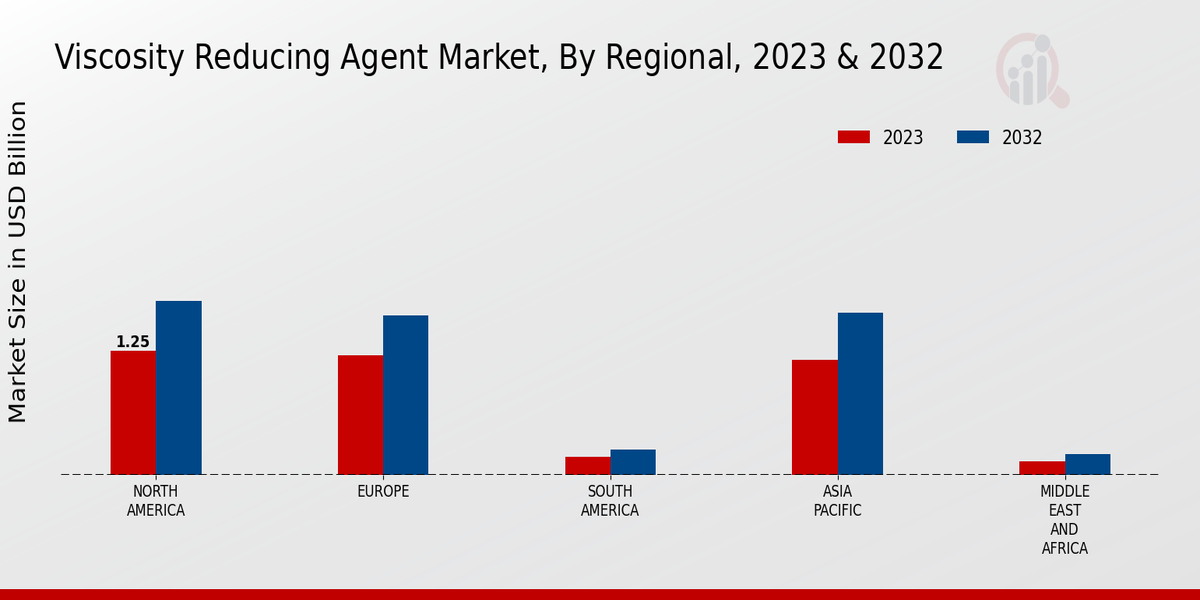Market Trends and Projections
The Global Viscosity Reducing Agent Market Industry is poised for growth, with key trends indicating a positive trajectory. The market is projected to reach 1.88 USD Billion in 2024 and is expected to expand to 2.77 USD Billion by 2035, reflecting a steady increase in demand across various sectors. The anticipated CAGR of 3.59% from 2025 to 2035 underscores the ongoing evolution of viscosity reducing agents and their applications. Factors such as technological advancements, regulatory support, and environmental considerations are likely to shape market dynamics, creating opportunities for innovation and growth in the coming years.
Growth in the Automotive Sector
The automotive industry significantly contributes to the Global Viscosity Reducing Agent Market Industry, driven by the need for improved fuel efficiency and performance. As manufacturers increasingly focus on developing high-performance lubricants, viscosity reducing agents become essential in formulating engine oils that meet stringent regulatory standards. The growing trend towards electric vehicles also necessitates the use of advanced lubricants, which often incorporate viscosity modifiers to enhance performance. This shift is expected to sustain market growth, with projections indicating that the market will reach 2.77 USD Billion by 2035, reflecting the automotive sector's ongoing evolution and its impact on viscosity reducing agents.
Increasing Demand from Oil and Gas Industry
The Global Viscosity Reducing Agent Market Industry experiences heightened demand primarily driven by the oil and gas sector. As companies strive to enhance the efficiency of crude oil transportation, viscosity reducing agents play a crucial role in minimizing friction and improving flow rates. In 2024, the market is projected to reach 1.88 USD Billion, reflecting the industry's reliance on these agents to facilitate smoother operations. Furthermore, the ongoing exploration and production activities in challenging environments necessitate the use of advanced viscosity modifiers, thereby propelling market growth. This trend indicates a robust future for viscosity reducing agents in the oil and gas industry.
Regulatory Support for Enhanced Oil Recovery
Regulatory frameworks promoting enhanced oil recovery (EOR) techniques are pivotal for the Global Viscosity Reducing Agent Market Industry. Governments worldwide are increasingly advocating for EOR methods to maximize oil extraction from existing fields. Viscosity reducing agents are integral to these processes, as they lower the viscosity of heavy crude oils, facilitating easier extraction. This regulatory support not only boosts the demand for viscosity reducers but also aligns with global sustainability goals by optimizing resource utilization. As the market evolves, it is anticipated that the demand for these agents will continue to rise, further solidifying their role in the oil and gas sector.
Environmental Concerns and Sustainable Practices
Environmental considerations are increasingly shaping the Global Viscosity Reducing Agent Market Industry. As industries face pressure to adopt sustainable practices, the demand for eco-friendly viscosity reducing agents is on the rise. Manufacturers are exploring biodegradable and non-toxic alternatives that minimize environmental impact while maintaining performance standards. This shift towards sustainability not only aligns with global environmental goals but also opens new market opportunities for innovative products. Companies that invest in developing green viscosity reducers are likely to gain a competitive edge, as consumers and regulatory bodies prioritize environmentally responsible solutions.
Technological Advancements in Chemical Formulations
Technological innovations significantly influence the Global Viscosity Reducing Agent Market Industry. The development of novel chemical formulations enhances the performance of viscosity reducers, making them more effective in various applications. For instance, advancements in polymer technology have led to the creation of more efficient viscosity modifiers that can operate under extreme conditions. This evolution not only improves product performance but also expands the range of applications across industries such as automotive and manufacturing. As a result, the market is expected to grow at a CAGR of 3.59% from 2025 to 2035, indicating a promising trajectory fueled by continuous innovation.




















